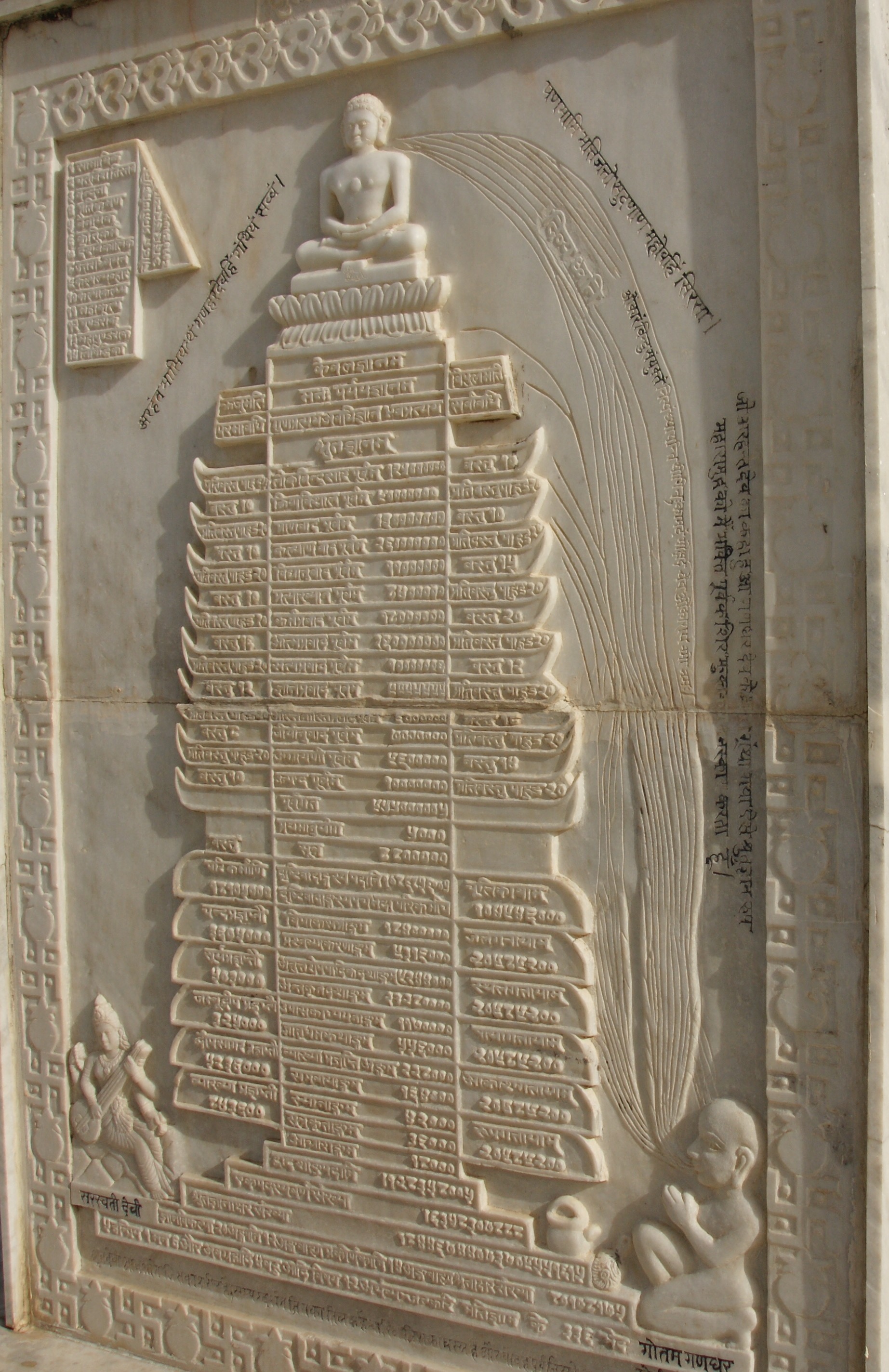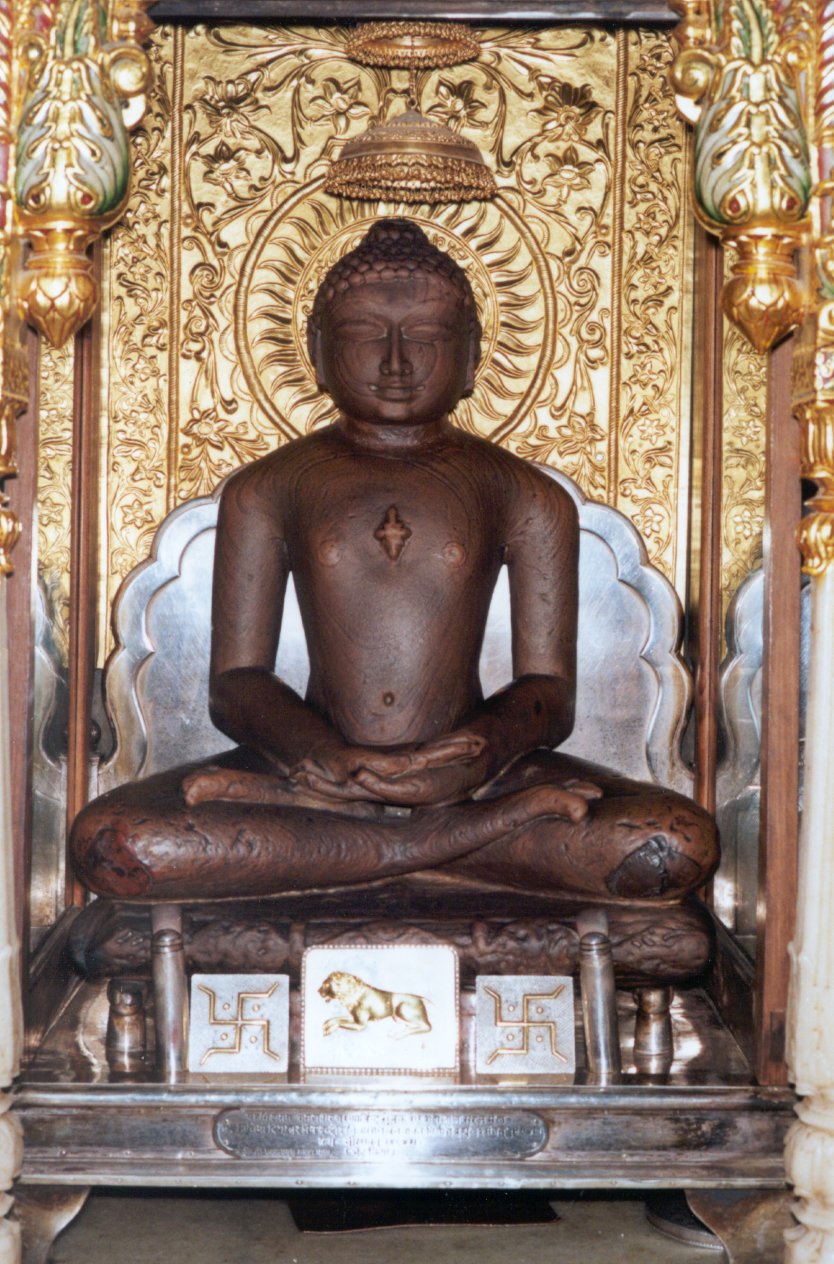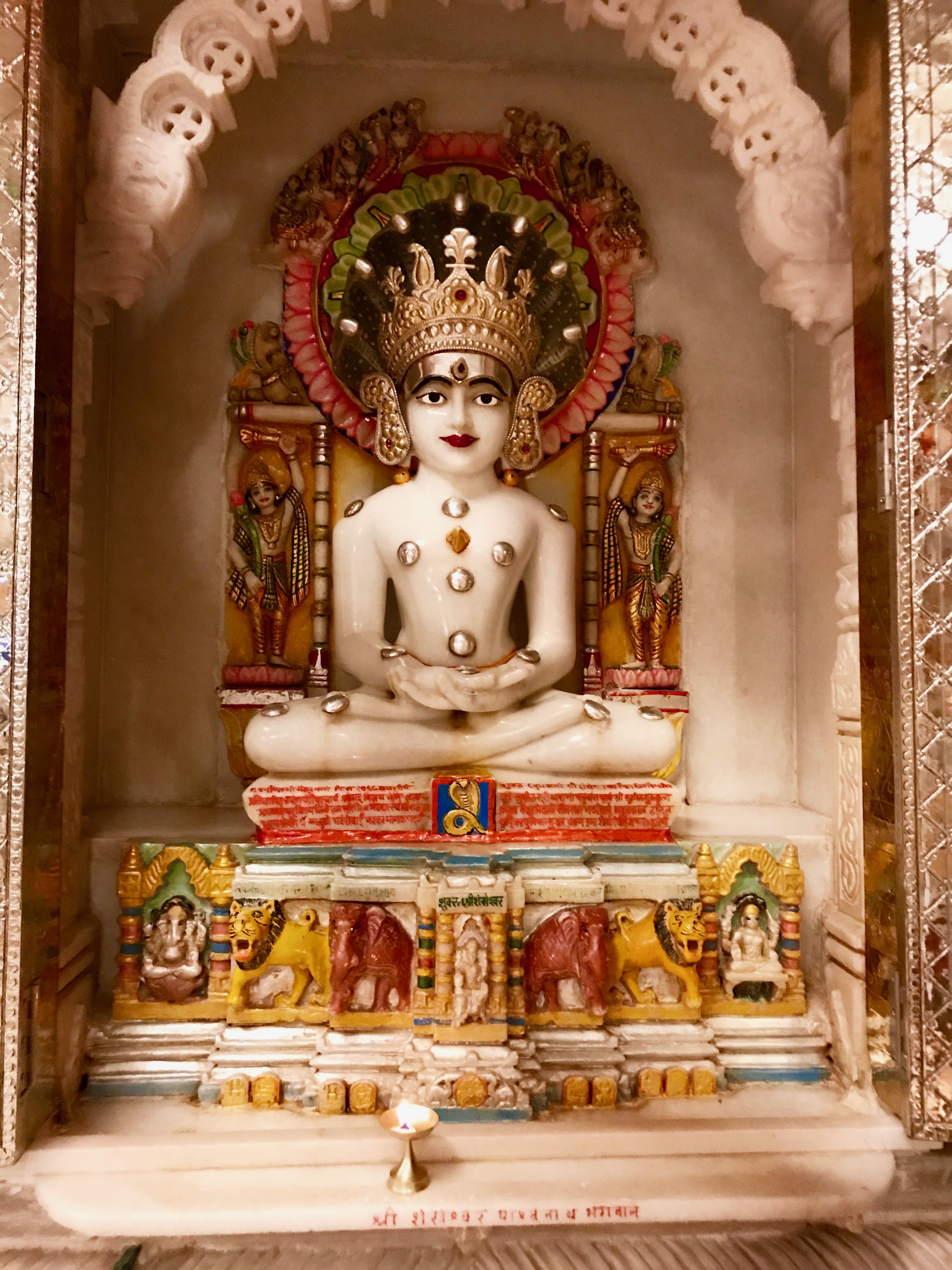|
Mūlācāra
Mulachara () (Fundamental Conduct) is a Jain text composed by Acharya Vattakera of the Digambara tradition, around 150 CE. Mulachara discusses ''anagara-dharma'' – the conduct of a Digambara monk.Mulachara Ka Samikshatmaka Adhyayana; Premi, Phulchand Jain, 1987 It consists twelve chapters and 1,243 verses on (mendicant discipline). It is also called Digambara Acharanga. It is said to be derived from the original Ācārāṅga Sūtra and discusses the conduct of a Digambara monk. The text is written in a dialect that is distinct but shares characteristics with Ardhamagadhi. Its dialect has been called Digambara Sauraseni (or Jain Sauraseni) and proposed to reflect the language of ancient Mathura region by Indian scholars. Many characteristics of the Mulachara manuscript, as found in Karnataka, share elements of monastic conduct found in Śvetāmbara scriptures. Some of the verses of ''Mulaccara'' are almost same as those found in Śvetāmbara's ''Dasavaikalika''. This suggests ... [...More Info...] [...Related Items...] OR: [Wikipedia] [Google] [Baidu] |
List Of Jain Texts
Jain literature () refers to the literature of the Jain religion. It is a vast and ancient literary tradition, which was initially transmitted orally. The oldest surviving material is contained in the canonical ''Jain Agamas'', which are written in Ardhamagadhi, a Prakrit ( Middle-Indo Aryan) language. Various commentaries were written on these canonical texts by later Jain monks. Later works were also written in other languages, like Sanskrit and Maharashtri Prakrit. Jain literature is primarily divided between the canons of the ''Digambara'' and '' Śvētāmbara'' orders. These two main sects of Jainism do not always agree on which texts should be considered authoritative. More recent Jain literature has also been written in other languages, like Marathi, Tamil, Rajasthani, Dhundari, Marwari, Hindi, Gujarati, Kannada, Malayalam and more recently in English. Beliefs Jains believe their religion is eternal, and the teachings of the first tīrthaṅkara, Ṛṣabhan ... [...More Info...] [...Related Items...] OR: [Wikipedia] [Google] [Baidu] |
Jainism
Jainism ( ), also known as Jain Dharma, is an Indian religions, Indian religion whose three main pillars are nonviolence (), asceticism (), and a rejection of all simplistic and one-sided views of truth and reality (). Jainism traces its spiritual ideas and history through the succession of twenty-four , supreme preachers of ''dharma''. The first in the current time cycle is Rishabhadeva, who tradition holds lived millions of years ago; the 23rd is Parshvanatha, traditionally dated to the 9th century Common Era, BCE; and the 24th is Mahāvīra, Mahavira, who lived . Jainism is considered an eternal ''dharma'' with the guiding every time cycle of the Jain cosmology, cosmology. Central to understanding Jain philosophy is the concept of ''bhedavijñāna'', or the clear distinction in the nature of the soul and non-soul entities. This principle underscores the innate purity and potential for liberation within every Jīva (Jainism), soul, distinct from the physical and menta ... [...More Info...] [...Related Items...] OR: [Wikipedia] [Google] [Baidu] |
Prakrit
Prakrit ( ) is a group of vernacular classical Middle Indo-Aryan languages that were used in the Indian subcontinent from around the 5th century BCE to the 12th century CE. The term Prakrit is usually applied to the middle period of Middle Indo-Aryan languages, excluding Pali. The oldest stage of Middle Indo-Aryan language is attested in the inscriptions of Ashoka (ca. 260 BCE), as well as in the earliest forms of Pāli, the language of the Theravāda Buddhist canon. The most prominent form of Prakrit is Ardhamāgadhı̄, associated with the ancient kingdom of Magadha, in modern Bihar, and the subsequent Mauryan Empire. Mahāvı̄ra, the last tirthankar of 24 tirthankar of Jainism, was born in Magadha, and the earliest Jain texts were composed in Ardhamāgadhı̄. Etymology There are two major views concerning the way in which Sanskrit and Prakrit are related. One holds that the original matter in question is the speech of the common people, unadorned by grammar, and that p ... [...More Info...] [...Related Items...] OR: [Wikipedia] [Google] [Baidu] |
Acharya
In Indian religions and society, an ''acharya'' (Sanskrit: आचार्य, IAST: ; Pali: ''ācariya'') is a religious teacher in Hinduism and Buddhism and a spiritual guide to Hindus and Buddhists. The designation has different meanings in Hinduism, Buddhism and secular contexts. ''Acharya'' is sometimes used to address an expert teacher or a scholar in any discipline, e.g.: Bhaskaracharya, the expert mathematician. Etymology The Sanskrit phrase ''ācāraṁ grahāyati ācāraṁ dadāti iti vā'' means ''Acharya'' (or teacher) is the one who teaches good conduct to one's students. A female teacher is called an ''achāryā,'' and a male teacher's wife is called an ''achāryāni'' In Hinduism The term '''Acharya''' has numerous definitions. Hinduism frequently uses the terms "''acharya''" and "''guru''" interchangeably. According to the Dharmaśāstra, Dharma Shastras, ''acharya'' is the one who imparts knowledge of the entire Vedas, Veda to a student and performs upan ... [...More Info...] [...Related Items...] OR: [Wikipedia] [Google] [Baidu] |
Digambara
''Digambara'' (; "sky-clad") is one of the two major Jain schools and branches, schools of Jainism, the other being ''Śvetāmbara'' (white-clad). The Sanskrit word ''Digambara'' means "sky-clad", referring to their traditional monastic practice of neither possessing nor wearing any clothes. Nakedness was the ideal practice of lord Mahavira and his immediate followers. Mahavira emphasized the importance of nakedness for monks. It symbolizes complete detachment and is an ideal form of conduct. Mahavira believed that renouncing clothes made the body immune to external influences like heat and cold, increasing resilience. Without clothes, a monk would avoid the distractions of acquiring, maintaining, and washing garments, allowing him to focus on spiritual growth and self-discipline. Digambara and Śvetāmbara traditions have had historical differences ranging from their dress code, their temples and iconography, attitude towards female monastics, their legends, and the texts the ... [...More Info...] [...Related Items...] OR: [Wikipedia] [Google] [Baidu] |
Digambara Monk
A Digambara monk or Digambara Sādhu (also ''muni'', ''sādhu'') is a Sādhu in the Digambar tradition of Jainism, and as such an occupant of the highest limb of the four-fold ''sangha''. Digambar Sādhus have 28 primary attributes which includes observance of the five supreme vows of ''ahimsa'' (non-injury), truth, non-thieving, celibacy and non-possession. A Digambar Sādhu is allowed to keep only a feather whisk, a water gourd and scripture with him. In Jainism, those '' śrāvakas'' (householders) who wish to attain ''moksha'' (liberation) renounce all possessions and become an ascetic. According to the Jain text, '' Dravyasamgraha'': Digambar Sādhus are also called ''nirgranth'' which means "one without any bonds". The term originally applied to those of them who were on the point of attaining omniscience, on the attainment of which they were called ''munis''. Rishabhanath (the first '' Tirthankar'') is said to be the first ''Digambar'' Sādhu of the present hal ... [...More Info...] [...Related Items...] OR: [Wikipedia] [Google] [Baidu] |
Ācārāṅga Sūtra
The Ācārāṅga Sūtra, the foremost and oldest Jain text (''First book'' c. 5th–4th century BCE; Second book c. Late 4th–2nd century BCE), is the first of the twelve Angas, part of the agamas which were compiled based on the teachings of 24th Tirthankara Mahavira. The existing text of the Ācārāṅga Sūtra which is used by the Śvetāmbara sect of Jainism was recompiled and edited by Acharya Devardhigani Kshamashraman, who headed the council held at Valabhi c. 454 CE. The Digambaras do not recognize the available text, and regard the original text as having been lost in its original form. The Digambara text, '' Mulachara'' is said to be derived from the original Ācārāṅga Sūtra and discusses the conduct of a Digambara monk. Introduction The Ācārāṅga Sūtra is the oldest agama, from a linguistic point of view, written in Ardhamagadhi Prakrit. The Sutra contains two books, or Srutaskandhas. The first book is the older part, to which other treatises were la ... [...More Info...] [...Related Items...] OR: [Wikipedia] [Google] [Baidu] |
Ardhamagadhi
Ardhamagadhi Prakrit was a Middle Indo-Aryan language and a Dramatic Prakrit thought to have been spoken in modern-day Bihar and Uttar Pradesh and used in some early Buddhist and Jain dramas. It was likely a Central Indo-Aryan language, related to Pali and the later Shauraseni Prakrit. The Eastern Hindi languages evolved from Ardhamagadhi Prakrit. Relationship with Pali Theravada Buddhist tradition has long held that Pali was synonymous with Magadhi and there are many analogies between it and ', literally 'half-Magadhi'. was prominently used by Jain scholars and is preserved in the Jain Agamas. Both Gautama Buddha and the tirthankara Mahavira Mahavira (Devanagari: महावीर, ), also known as Vardhamana (Devanagari: वर्धमान, ), was the 24th ''Tirthankara'' (Supreme Preacher and Ford Maker) of Jainism. Although the dates and most historical details of his lif ... preached in the region of Magadha. Ardhamāgadhī differs from later Magadhi Prakri ... [...More Info...] [...Related Items...] OR: [Wikipedia] [Google] [Baidu] |
Mathura
Mathura () is a city and the administrative headquarters of Mathura district in the states and union territories of India, Indian state of Uttar Pradesh. It is located south-east of Delhi; and about from the town of Vrindavan. In ancient times, Mathura was an economic hub, located at the junction of important caravan (travellers), caravan routes. The 2011 Census of India estimated the population of Mathura at 441,894. In Hinduism, the birthplace of Krishna, one of the main deities in that religion, is believed to be located in Mathura at the Krishna Janmasthan Temple Complex. It is one of the Sapta Puri, the seven cities considered holy by Hindus, also is called Mokshyadayni Tirth. The Kesava Deo Temple was built in ancient times on the site of Krishna's birthplace (an underground prison). Mathura was the capital of the kingdom of Surasena, ruled by Kamsa, the maternal uncle of Krishna. Mathura is part of the Krishna circuit (Mathura, Vrindavan, Barsana, Govardhan, 48 kos pa ... [...More Info...] [...Related Items...] OR: [Wikipedia] [Google] [Baidu] |
Karnataka
Karnataka ( ) is a States and union territories of India, state in the southwestern region of India. It was Unification of Karnataka, formed as Mysore State on 1 November 1956, with the passage of the States Reorganisation Act, 1956, States Reorganisation Act, and renamed ''Karnataka'' in 1973. The state is bordered by the Lakshadweep Sea to the west, Goa to the northwest, Maharashtra to the north, Telangana to the northeast, Andhra Pradesh to the east, Tamil Nadu to the southeast, and Kerala to the southwest. With 61,130,704 inhabitants at the 2011 census, Karnataka is the List of states and union territories of India by population, eighth-largest state by population, comprising 31 List of districts in India, districts. With 15,257,000 residents, the state capital Bengaluru is the largest city of Karnataka. The economy of Karnataka is among the most productive in the country with a gross state domestic product (GSDP) of and a per capita GSDP of for the financial year 2023– ... [...More Info...] [...Related Items...] OR: [Wikipedia] [Google] [Baidu] |
Śvetāmbara
The Śvetāmbara (; also spelled Shwetambara, Shvetambara, Svetambara or Swetambara) is one of the two main branches of Jainism, the other being the Digambara. ''Śvetāmbara'' in Sanskrit means "white-clad", and refers to its ascetics' practice of wearing white clothes, which sets it apart from the ''Digambara'' or "sky-clad" Jains whose ascetic practitioners go nude. Śvetāmbaras do not believe that ascetics must practice nudity. The Śvetāmbara and Digambara traditions have had historical differences ranging from their dress code, their temples and iconography, attitude towards Jain nuns, their legends and the texts they consider as important. Śvetāmbara Jain communities are currently found mainly in Gujarat, Rajasthan and coastal regions of Maharashtra. According to Jeffery D. Long, a scholar of Hindu and Jain studies, about four-fifths of all Jains in India are Śvetāmbaras. History and lineage Śvetāmbaras consider themselves to be the original followers of Maha ... [...More Info...] [...Related Items...] OR: [Wikipedia] [Google] [Baidu] |
Routledge
Routledge ( ) is a British multinational corporation, multinational publisher. It was founded in 1836 by George Routledge, and specialises in providing academic books, academic journals, journals and online resources in the fields of the humanities, behavioral science, behavioural science, education, law, and social science. The company publishes approximately 1,800 journals and 5,000 new books each year and their backlist encompasses over 140,000 titles. Routledge is claimed to be the largest global academic publisher within humanities and social sciences. In 1998, Routledge became a subdivision and Imprint (trade name), imprint of its former rival, Taylor & Francis, Taylor & Francis Group (T&F), as a result of a £90-million acquisition deal from Cinven, a venture capital group which had purchased it two years previously for £25 million. Following the merger of Informa and T&F in 2004, Routledge became a publishing unit and major imprint within the Informa "academic publishing ... [...More Info...] [...Related Items...] OR: [Wikipedia] [Google] [Baidu] |








